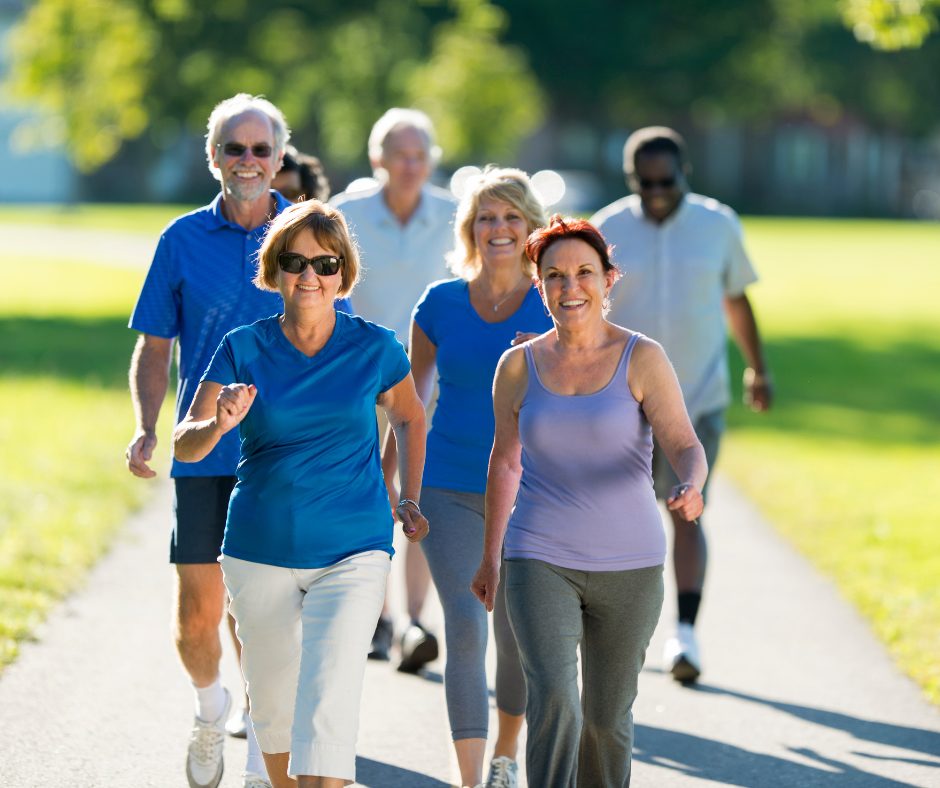Did you know that half of adults aged 65 years or over do not meet their required quota for physical activity each day? While that might not sound like a big problem, physical activity is one of the main factors that can keep you out of the doctor’s office and living the kind of life you always dreamed of in retirement. If you know you currently aren’t making the grade in terms of being active, the good news is that retirement can be an ideal time for older adults to get active once again and reap the benefits. Make no mistake, the benefits of being physically active in retirement are definitely something to get you jumping for joy.
The risks of inactivity
The Australian Institute of Health and Welfare recommends that people over the age of 65 years should be engaging in at least 30 minutes of physical activity each day, at least five days a week. For many people, the last two years of lockdowns and restrictions have meant that certain activities, such as going to the gym or participating in a sports club, may have fallen by the wayside. But is it really such a big problem if we’ve been exchanging a morning jog for a morning coffee catch-up? The reality is that dropping that little bit of physical activity can result in more inconveniences than just a tighter waistband on your trousers.
Physical inactivity is a significant contributing factor for many diseases, such as Type 2 diabetes, heart disease, certain cancers including uterine, bowel, and breast cancer, stroke and even dementia. As well as physical illnesses, being inactive can also contribute to a drop in mental health, and increased feelings of depression and anxiety. It’s clear that choosing to sit instead of move can have significant and lasting impacts on quality of life, during a time of life that should be about enjoying yourself and doing what makes you happy.
But instead of focusing on the negative, let’s look for the positive. The truth is, there is plenty to be positive about if you can find the motivation to get moving.
What’s in it for me?
Apart from the obvious benefits of keeping our weight in a healthy range, and lowering our risk of certain diseases, getting active for even a short amount of time each day can improve blood pressure and increase bone density and muscle development. In more practical terms, that means a reduced risk of falls, and the likelihood of continued mobility and independence for those living alone. Similarly, getting active can improve concentration, encourage new social connections, and increase feelings of self-esteem and confidence. This means that a little bit of physical activity, when taken regularly, could make the difference between living well and simply living. What’s more, retirement can actually signal a renewal in physical activity for older Australians.
A study by the University of Sydney found that, for many people, retirement opened up a new world of opportunities to become active. It was discovered that, on average, retired people significantly increased the amount of time they spent in physical activity per week, while decreasing their average time spent sitting, and also enjoyed longer periods of quality sleep.
In short, getting up off the couch can result in both a longer life, and a better quality of life. But the best news is that, for people of a certain age, branching out and getting physical is something that TriCare Retirement Living can help with.
An active retirement with TriCare
One of the benefits of living in a TriCare community is that all the amenities you need to support an active lifestyle are right on your doorstep. Whether it be a pool, a safe and secure community in which to go for a walk, a putting or bowling green, or a gym, TriCare is the perfect environment for creating and maintaining a physically active lifestyle.
If you’re looking to take the plunge into a healthy and active retirement, consider how TriCare Retirement Living communities could help you on the way to living your best retirement life. Get in touch on 07 3360 9000 or use our Contact Us form here.



